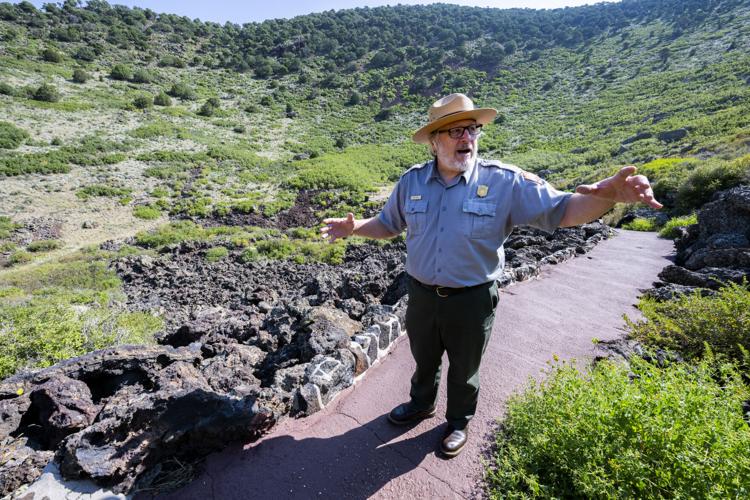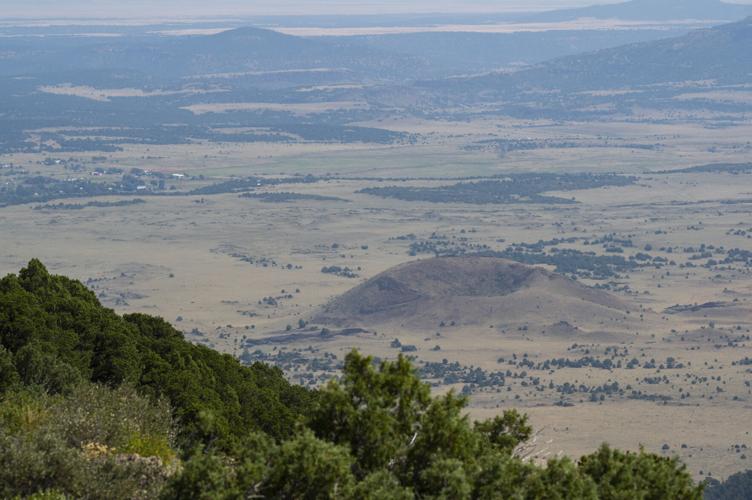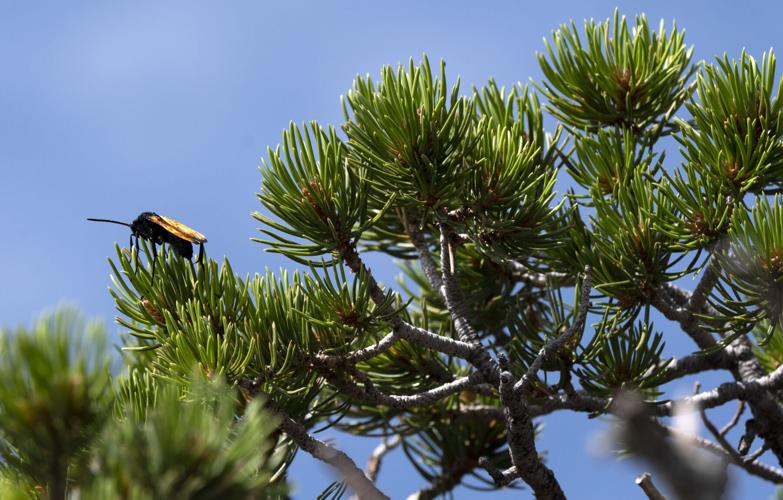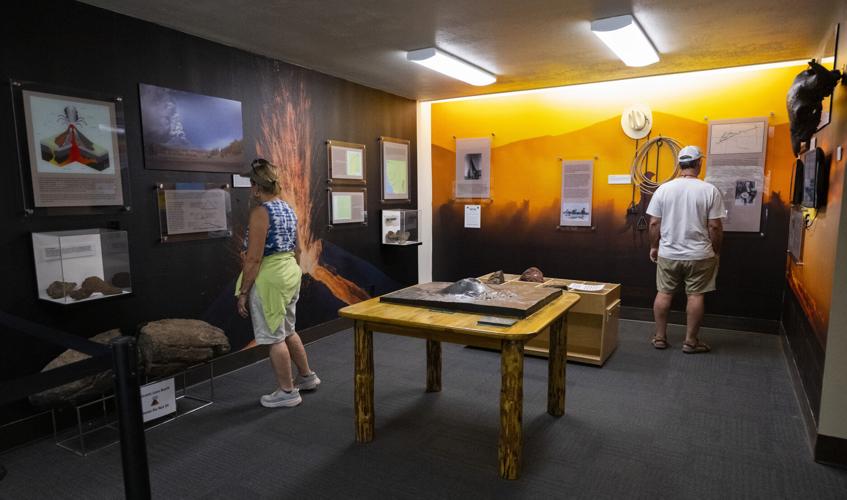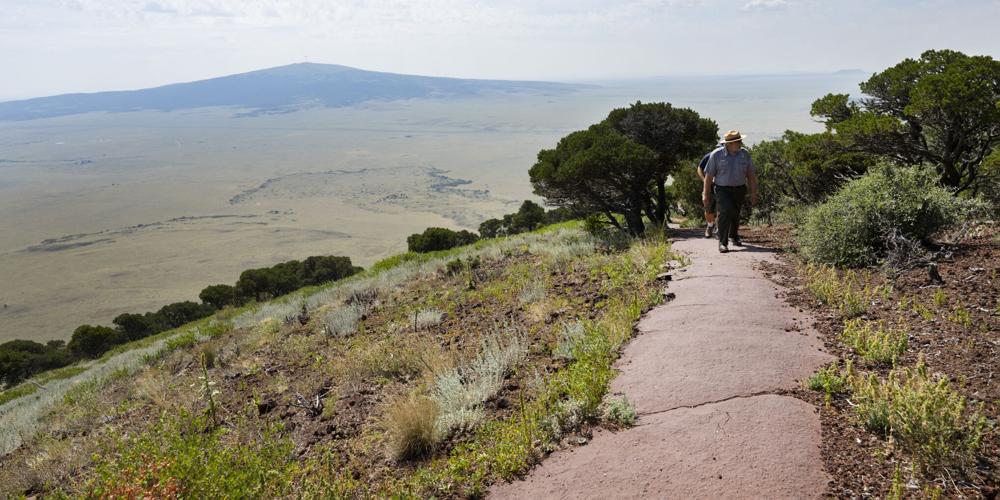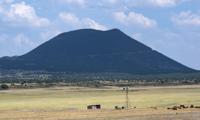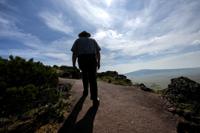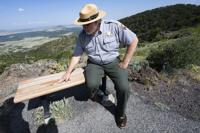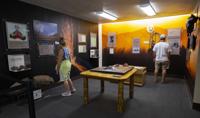Just south of Colorado border, you can walk into a volcano crater
CAPULIN, N.M. • Just beyond Colorado’s southern border into New Mexico, a lonely highway runs through fields of cattle and pronghorn, of windmills and splintered, crumbling remains of homesteads. Then the mountain emerges.
Now the imagination travels to a time long before the Wild West. The mountain’s shape is unmistakable — “a striking example of recent extinct volcanoes,” read President Woodrow Wilson’s proclamation in 1916.
The cinder cone, declared one of North America’s finest of its kind decades before that proclamation, is Capulin Volcano National Monument.
The designation came two weeks before the National Park Service was established. The volcano served as a captivating, perfectly symmetrical symbol of America’s new effort to protect its natural wonders.
Away from any major population center, it’s often missed today, says Geoff Goins, the national monument’s interpretation manager.
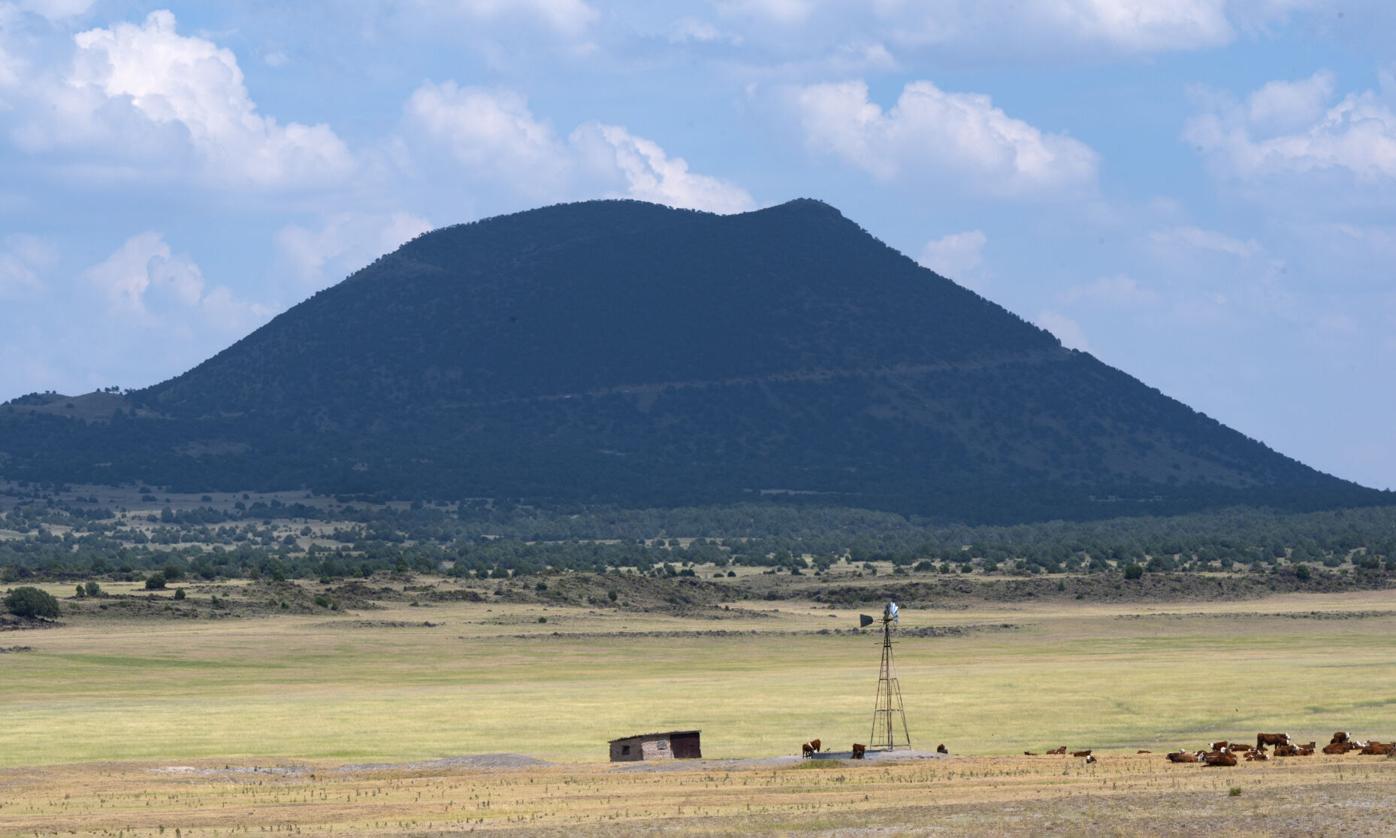
The Capulin Volcano National Monument stands above the plains as seen from U.S. 64/87 east of Raton, N.M. , Tuesday, Aug. 22, 2023.
Christian Murdock/The Gazette

The Capulin Volcano National Monument stands above the plains as seen from U.S. 64/87 east of Raton, N.M., Tuesday, Aug. 22, 2023.
“Not well known at all,” he says. “We get people all the time who say they’ve driven by here for 25 years and they never stopped, and they finally do and they say they wish they did.
“Like, you can stand on a volcano! You can walk into a crater! This is so cool!”
This is what Goins does now atop the road high above the plains, cresting near 8,000 feet. A trail leads down the volcano’s forested mouth, down to the vent that roared about 60,000 years ago, blowing ash and debris into the sky above mammoths and massive bison that roamed the land then.
“That’s a big lava bomb,” Goins says, stopping amid the dark, ancient rubble. “That’s a big rock that blew out of the vent and landed here.”
More remains are found above. Another trail circles the crater’s rim, affording more mesmerizing vistas: the Raton-Clayton Volcanic Field spotted with more cones, buttes and mesas, which appear to float out to the Sangre de Cristo peaks. Most commanding are the broad shoulders of Sierra Grande, the largest of the volcanos.
A poem once captured the romance. Wrote one Elizabeth H. Emerson: “Oh! Capulin! … Upon your rim one gazes into space, far over meadows to mountains clad with snow, or turning, walks within your hollow heart and treads on the cinders last to glow and die.”
Volcanoes have always captured the imagination.

Park Ranger Geoff Goins walks the one-mile loop of the Carter Rim Trail on the top of Capulin Volcano National Monument in northeastern New Mexico. Sierra Grande, in the background, is the largest volcano in the Raton-Clayton volcanic field. (The Gazette, Christian Murdock)
Christian Murdock/The Gazette

Park Ranger Geoff Goins walks the one-mile loop of the Carter Rim Trail on the top of Capulin Volcano National Monument in northeastern New Mexico. Sierra Grande, in the background, is the largest volcano in the Raton-Clayton volcanic field. (The Gazette, Christian Murdock)
The relationship between them and us “is generally one of fear and reverence for the awesome destructive power,” reads the exhibit in the national monument’s visitor center. “Extinct volcanoes, however, bear silent witness to the world around them. Capulin Volcano may have erupted nearly 60,000 years ago, but it too has played a role in history.”
It was thought to be an important marker for several tribes who lived and hunted across these plains for thousands of years. Park history maintains Spanish explorer Juan de Ulibarri and his soldiers were the first non-native people to pass the volcano in 1706.
The “super highway” that was the Santa Fe Trail would send many more — waves of European trappers, traders, explorers and gold seekers. Through the 19th century and into the next, Capulin would overlook “an interesting host of characters,” says a park guide and historian, Rachel Vegors.
There was, for one, a local rancher named Jessie Foote Jack. “Most people don’t know about her,” Vegors says.
And that’s perhaps a shame, considering Jack’s claim to fame.
In 1916, she was named Capulin National Monument’s first custodian, becoming the first woman to hold the title across the National Park Service. At a time when women could not vote, here was one tasked with overseeing the latest addition to the upstart agency.
The National Park Service was born as “mining, drilling, logging and other resource exploitations left many once pristine environments damaged and unusable,” write Dr. Jon Hunner and Shirley G. Lail in an administrative history of Capulin Volcano. The mountain “was not immune,” according to the authors, noting “a large pit from early cinder mining.”
But early ranchers held respect for the volcano, Goins says.
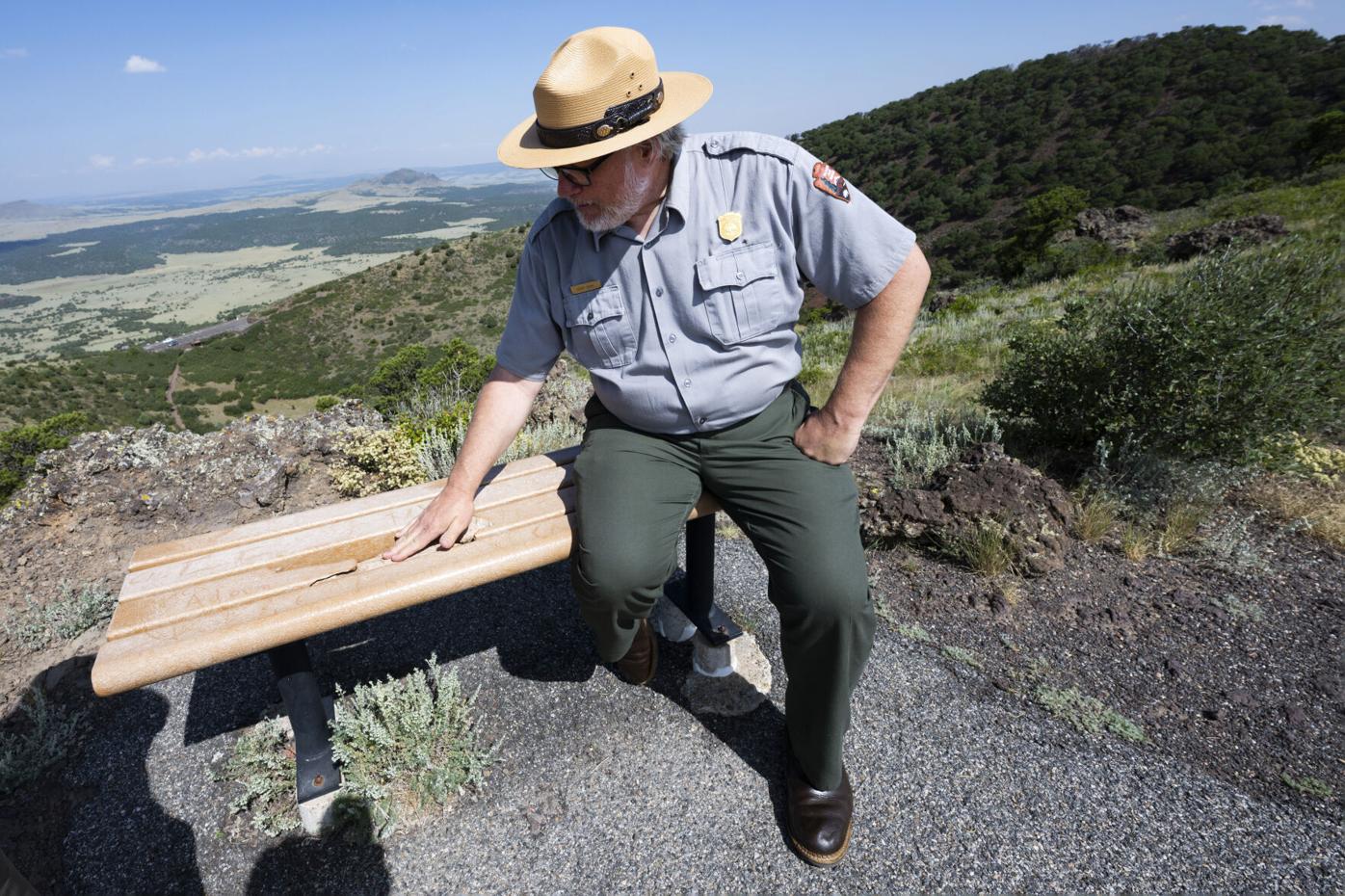
Park Ranger Geoff Goins shows the damage from a lightning strike on a bench along the Crater Rim Trail Tuesday, Aug. 22, 2023, in Capulin Volcano National Monument.
photos by Christian Murdock, The Gazette

Park Ranger Geoff Goins shows the damage from a lightning strike on a bench along the Crater Rim Trail Tuesday, Aug. 22, 2023, in Capulin Volcano National Monument.
“They saw this and realized it had some significance,” he says. “No one settled it, no one logged it. There was a fence built around it.”
The fence was built under Jack, whose intentions might not have been entirely pure. She took up the enterprise of her late husband, a prominent rancher in the area. It’s believed his political connections granted her an inside track to custodian.
“She really wanted to be custodian so she could raise her cattle on the park,” Vegors says. “So she did.”
She was helped by one of her top ranch hands, George McJunkin, a freed slave who became a self-trained cowboy and naturalist. His name is forever linked to the fabled Folsom point.
The town of Folsom is down the road from the volcano — the area where McJunkin in 1908 spotted what he thought to be peculiar bison bones. Researchers eventually took his call for further review, going on to find the bones and projectile points that spelled a major discovery: Human beings were in North America thousands of years earlier than previously known.
While McJunkin kept watch over the national monument, reporting updates to the government, it was another man who would go down in history for park developments seen today.
A real estate speculator and business owner in the area, Homer Farr took on the title of custodian in 1923.
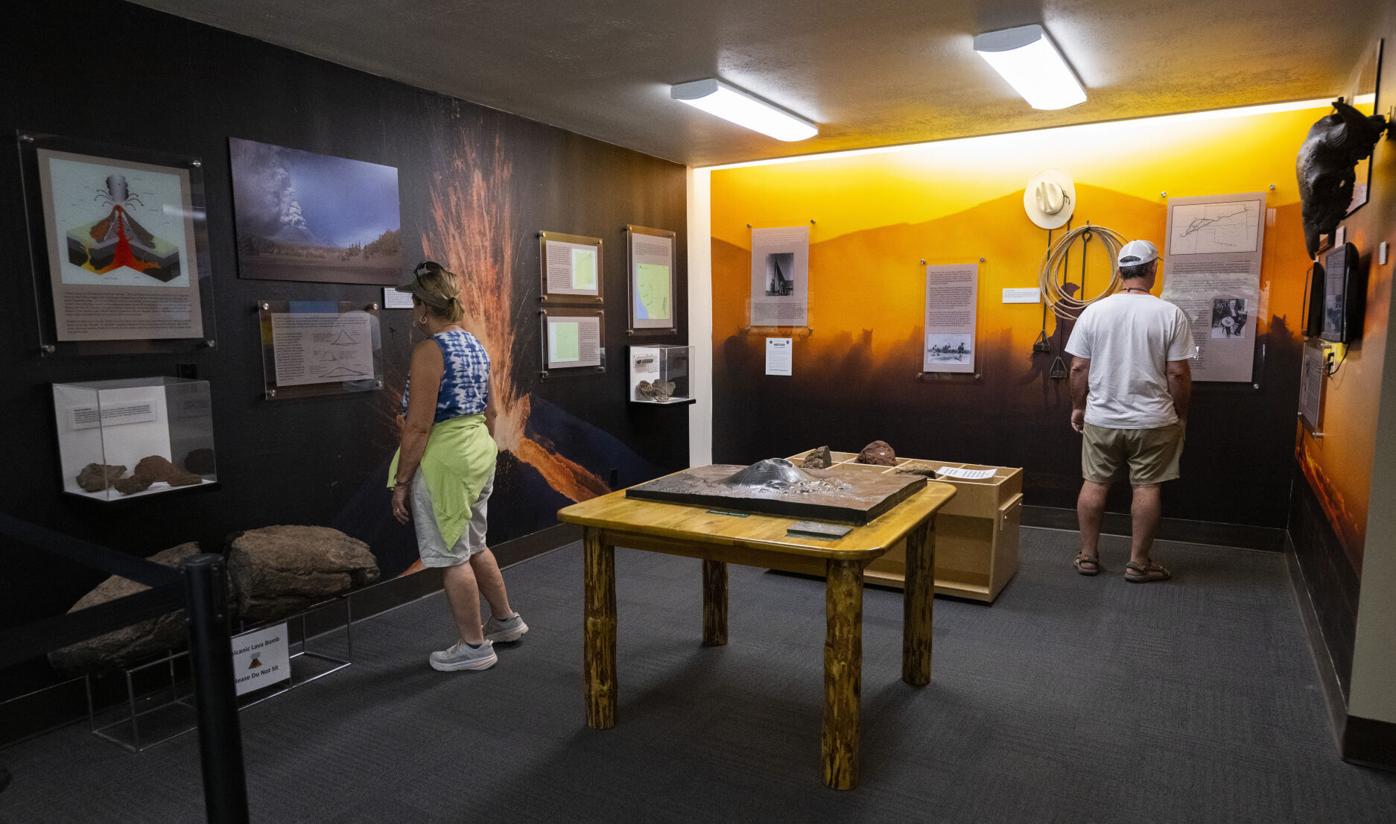
Visitors learn about the history of the Capulin Volcano Tuesday, Aug. 22, 2023, inside the visitor center at the Capulin Volcano National Monument in northeastern New Mexico. (The Gazette, Christian Murdock)
Christian Murdock/The Gazette

Visitors learn about the history of the Capulin Volcano Tuesday, Aug. 22, 2023, inside the visitor center at the Capulin Volcano National Monument in northeastern New Mexico. (The Gazette, Christian Murdock)
“His hope was that, if you can establish the park a little better, it would bring people in and maybe it would raise the price of the land he was selling,” Vegors says. “He was very interested in the park, but it started out more as him promoting it for his own cause.”
The summit road was his crowning achievement, built in 1925. It is the main attraction for visitors today.
An estimated 88,541 were counted last year. In the National Park Service’s list of 387 units, that number places Capulin Volcano in the lower half of visitation — far behind White Sands National Park (705,127) on the opposite, south end of New Mexico.
People are missing out, Goins says.
“For the views, for the geology, for the human history,” he says. “And biology, too, if you know what’s going on.”
He points to the lichen clinging to the volcanic rock, responsible for shedding sediment that contributes to the mountain’s mineral-rich soil. Chokecherry (“capulin” in Spanish) grows among the varied greenery, feeding lifeforms big and small: deer that frequent the crater and ladybugs that swarm plants along the rim.
Nature still prevails, Goins likes to think.
But, no, visitors won’t see any oozing lava — a complaint he has read in the park’s few negative reviews. For that, they’ll have to delve deeper into their imaginations.
Get OutThere
Signup today for free and be the first to get notified on new updates.




